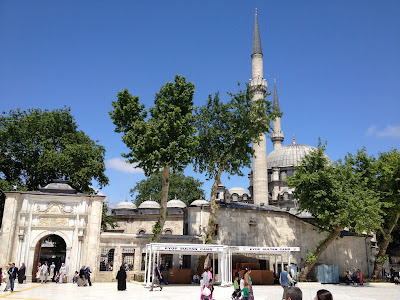History of Taj Mahal
Hello Friends, welcome back to another blog. In this blog, I talk about the Taj Mahal and Its history. let's start it.
In Agra, India there is a masterpiece of Mughal architecture, Which in the world is known as the Taj Mahal. This shining tomb, spread across 42 acres, is the epitome of beauty but still, It has a heart-wrenching story to tell.
When all these things were combined, a beautiful design surfaced. To construct the building structure millions of bricks were baked at the location. This was not at all easy and an enormous amount of money was spent on it. Every passing day the royal treasure was getting empty. Shah Jahan was not worried about anything, He just wanted tocomplete this work. It is said that during the construction of the Taj Mahal, many people were brought that food supplies ran short in the surrounding areas because of them. To take care of the laborer Shah Jahan had brought food supplies from the surrounding areas to Agra. After years of hard work, the main structure of the building was completed and now it was time to decorate it with marble. This marble was brought from Rajasthan 400 km away from Agra. Because the Makrana marble of this place is still believed to be the world's finest marble. Shah Jahan had reserved the entire lot of Makrana marble for the Taj Mahal. That means until the demand for the Taj Mahal was completed no one was allowed to purchase this marble. Thousands of tonnes of marble were brought from Rajasthan to Agra with the help of thousands of elephants. Taj Mahal's dome is so big that by seeing it one can feel its magnanimous size. Nowadays this kind of doom can be built using steel structures but 400 years ago to build a 40m high dome they had only stones. The stress calculation that the Mughal engineers did to build this dome is still praised by present-day engineers. The finish work of the Taj Mahal was done with the decoration of Pietra Dura. Pietra Dura is a term for the inlaying of valuable stones inside the marble by cutting and fitting. Marble is very skilfully cut and sculpted according to the shape of the valuable stone. And then with the help of glue, It is attached to the stone. The glue used inside the Taj Mahal was not ordinary.
After a lot of research and laboratory tests, it was found that this glue was made by mixing Sheera, lemon juice, and marble powder. The same glue is used for the renovation work of the Taj Mahal. Among the special things about the Taj Mahal is that it changes color four times a day. Before sunrise, It gives a black shade. After the sunrise, it has a light yellow and pink shade. And in the afternoon, it looks spectacularly white. As if a white pearl shining in the blue sky. And during the sunset, the entire building looks golden. After 22 years, in 1654 the construction work of the Taj Mahal was completed. Shah Jahan was successful in completing the world's most beautiful tomb for his beloved wife. Shah Jahan kept the name of this magnificent building in his wife's name. Inspired by Mumtaj Mahal the building was named Taj Mahal. Every year, Shah Jahan used to visit the Taj Mahal via the Yamuna River on Mumtaj Mahal's death anniversary. This entrance to the Taj Mahal was built only for the Royal family members. The wall of the entrance building has the finest sculpture work. Which was done to please the eyes of the Royals. Despite the success of the completion of this project, It had brought the Mughal Empire to the edge of ruination.
Four years later in 1658, his son overturned the throne and became the emperor of the Mughal Empire. Shah Jahan was made prisoner and kept inside the Agra fort. One facility was given to Shah Jahan so that he would be able to see the Taj Mahal through the window. After eight years of being imprisoned at the age of 74 years, Shah Jahan too left this world. Now it was time for Sharjah to meet Mumtaj Mahal, and he was buried inside the Taj Mahal.
.jpeg)
.jpeg)
.jpeg)
.jpeg)
.jpeg)
.jpeg)
.jpeg)

Comments
Post a Comment